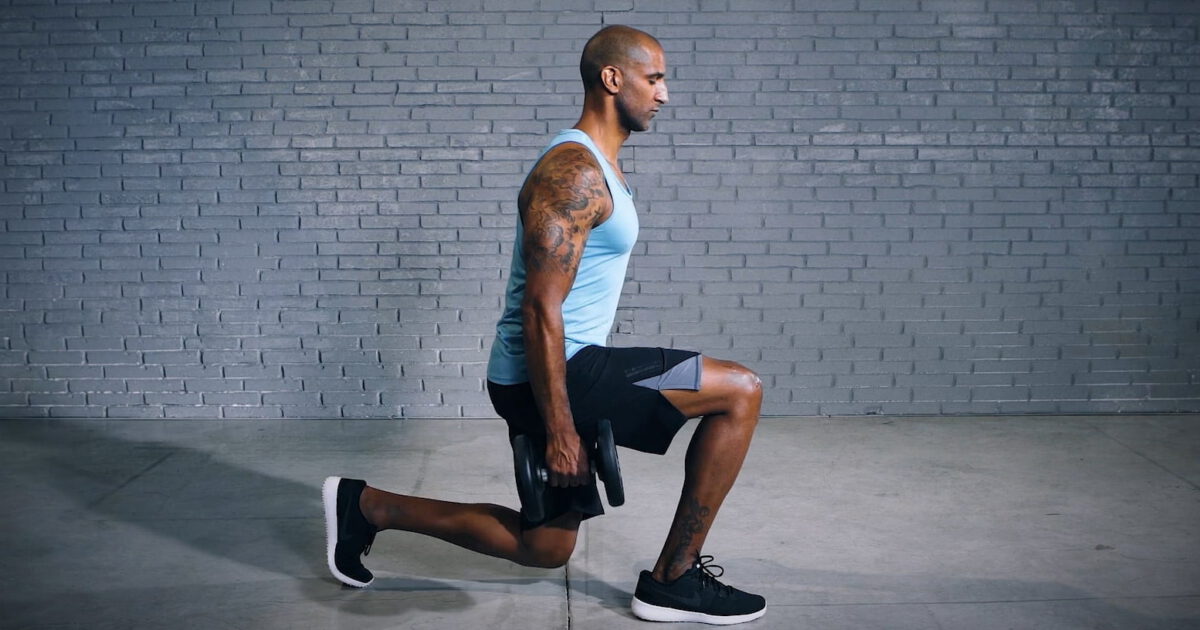WHAT
The dumbbell lunge is an excellent progression of the classic bodyweight lunge.
- More than just a strength progression, the use of dumbbells significantly challenges balance and control.
- The exercise may also be performed dynamically, as a walking lunge. Make sure that you do it only after mastering the technique a static position.
HOW
- Hold a dumbbell in each hand and stand with feet hip-width apart. Arms should remain straight and gently squeezed by the sides. Keep the shoulder set and the core engaged.
- Begin the movement by taking a step forward and bending down towards the floor. Aim for both knees to bend to 90 degrees comfortably. If this is not possible, aim to bend the knees to a comfortable point.
- Keep the dumbbells secure by your sides and the core engaged, as you return to standing.
- Repeat on the other leg and alternate continuously for reps or time.
WHY
- There is often a misconception that during a lunge, the lead (front) leg bears the most weight; as a result of this, many people focus on ‘pushing off’ the front leg, and this can compromise balance and stability. Instead, place equal focus on the rear leg – which serves as an anchor for the lunge.
- As you step forwards, maintain equal pressure through the rear leg – notice how this significantly improves your balance. As you return to standing, you will feel a better balance; this small modification becomes critical when carrying loads – whether it’s dumbbells or shopping bags. The addition of weight requires extra balance/stability and maintaining a strong anchor leg will reduce the risk of instability and loss of balance.
- It’s also essential to lunge using a natural step, and not over-stride – after all, this is how you do it in your daily life. That is why we advise you to follow the same pattern when training.
- As your technique improves, try challenging your balance further by holding the dumbbells at the front of the shoulders (rack position), and even overhead. In all cases, don’t compromise stability and balance.



